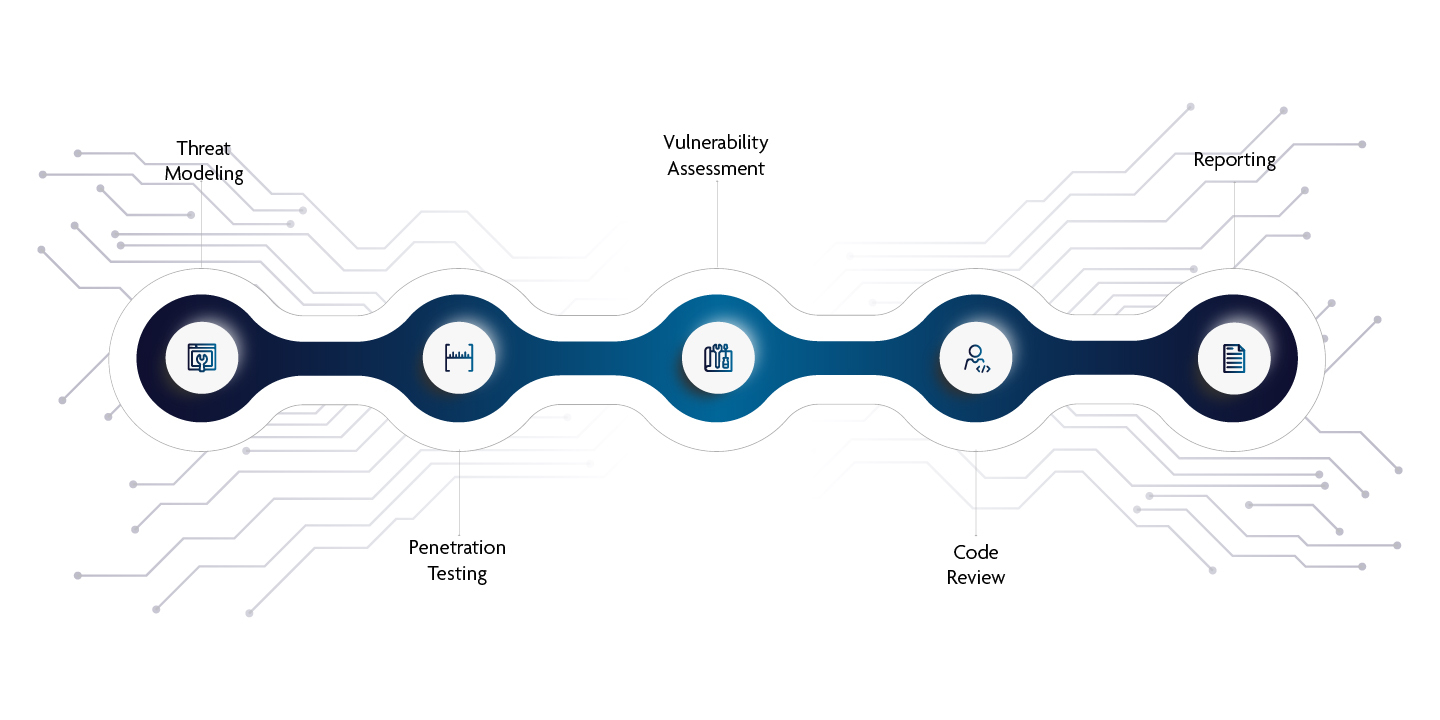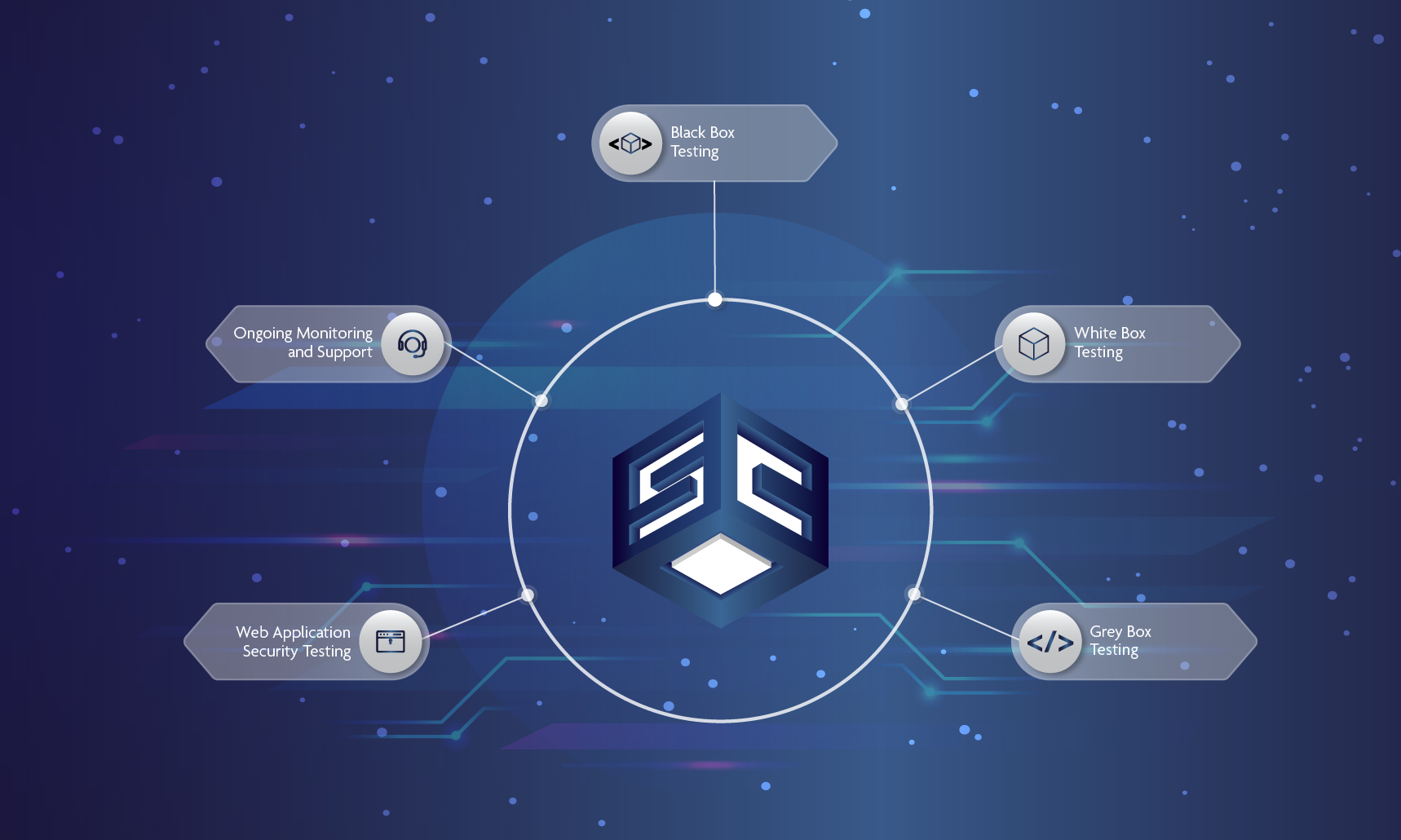Web Application Security
Welcome to Sealcube’s Web Application Security service page! At Sealcube, we understand the importance of web application security, as it protects your business from cyber attacks and data breaches that can cause significant damage to your reputation and financial stability. Our team of security experts specialises in web application security and provides comprehensive security testing services to ensure your web applications are protected against potential threats.
Web application security is an essential component of any comprehensive cybersecurity program. Web applications are a prime target for cybercriminals, as they often contain sensitive data and can provide an entry point into an organisation’s IT infrastructure. Web application security testing is critical for identifying vulnerabilities and potential attack vectors, enabling organisations to proactively address and mitigate risks.
Our Web Application Security Methodology:

-
Threat Modelling
We conduct a comprehensive analysis of your web application and identify potential security threats. Our team of experts then creates a detailed report outlining potential risks and recommendations for remediation. -
Penetration Testing
Our team simulates a real-world cyber attack on your web application to identify vulnerabilities and potential attack vectors. We use various penetration testing techniques to simulate different attack scenarios, ensuring that your web application is protected against a range of threats. -
Vulnerability Assessment
We use vulnerability testing tools to conduct a vulnerability assessment of your web application, identifying potential vulnerabilities and risks that may have been missed during our manual analysis. -
Code Review
We conduct a manual code review of your web application to identify potential vulnerabilities that may have been introduced during the development process. Our team of experts can provide recommendations for remediation and assist with implementing fixes. -
Reporting
We provide a detailed report outlining the findings of our analysis and recommendations for remediation. Our team can work with you to prioritise and address identified vulnerabilities, ensuring that your web application is secure and protected against potential threats.
At Sealcube, we offer a range of web application security testing services to help protect your organisation’s web applications. Our team of experts utilises a range of tools and techniques to conduct comprehensive security testing, including manual analysis, automated testing, and simulated attack scenarios.
Our Web Application Security RoadMap:
Sealcube’s web application security roadmap typically outlines the steps and actions that need to be taken to ensure that a web application is secure. Here are the steps taken for a web application security roadmap:
-
Identify potential threats
Assess the web application for vulnerabilities and identify potential threats that could compromise its security. -
Define security requirements
Define the security requirements for the web application, based on the identified threats and vulnerabilities. -
Develop a security plan
Develop a comprehensive security plan that outlines the steps that need to be taken to implement the security requirements. -
Implement security controls
Implement security controls to protect the web application against potential threats. This could include measures such as authentication and access controls, encryption, and intrusion detection. -
Conduct testing
Conduct thorough testing of the web application to identify any vulnerabilities that may have been missed. -
Monitor and maintain
Continuously monitor the web application for potential threats and ensure that it is maintained with the latest security patches and updates. -
Train staff
Educate staff on web application security best practices and ensure they understand their role in maintaining the application’s security. -
Establish incident response procedures
Develop incident response procedures to ensure that the organisation can respond effectively in the event of a security breach.
By following a web application security roadmap, organisations can ensure that their web applications are protected against potential threats and are secure.
Our Web Application Security Testing Services Include:

-
Black Box Testing
Our team conducts a comprehensive analysis of your web application from the perspective of an external attacker. This approach simulates a real-world cyber attack and can identify potential vulnerabilities that may be missed during other testing methods. -
White Box Testing
Our team conducts a detailed analysis of your web application’s code and architecture. This approach can identify vulnerabilities that may have been introduced during the development process and provides an in-depth understanding of the application’s security posture. -
Grey Box Testing:
Our team combines elements of both black box and white box testing to simulate an attack scenario while also having a limited level of knowledge about the application. This approach can provide a more realistic understanding of potential vulnerabilities and risks. -
Web Application Security Testing
We also provide comprehensive security testing for mobile applications, including both iOS and Android platforms. Our team utilises a range of tools and techniques to identify potential vulnerabilities and provide recommendations for remediation. -
Ongoing Monitoring and Support
At Sealcube, we understand that web application security is an ongoing process. Our team provides continuous monitoring and support, ensuring that your web application remains protected against potential threats.
At Sealcube, we believe that web application security is essential for any organisation. Our team of experts can help identify potential vulnerabilities and provide recommendations for remediation, ensuring that your web applications remain secure and protected against potential threats. Contact us today to learn more about our web application security testing services and how we can help protect your organisation’s sensitive data.

